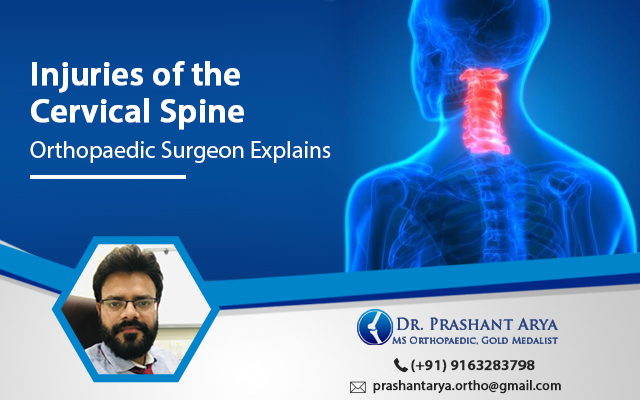The spinal cord is an important structure in the body, as it controls our ability to move and be active. Most movements feel natural when you’re in good health. Walking and standing up is like second nature to you. When you’re injured, even the simplest motions become difficult, if not impossible. Back pain, on the other hand, is so widespread that over 80% of adults will suffer from substantial back or neck discomfort at some point in their lives.
Orthopaedic doctor in Newtown can help you find a cure if you’re suffering from back pain or have just been injured. Learn more about the spine, the symptoms it causes, and how to treat it.
Cervical Spine Injuries – Common Causes
Cervical spine injuries are among the most serious injuries observed in patients, resulting in a loss of movement and function that can be temporary or permanent. There are a variety of ways that the cervical spine can be injured, but the most common ones involve driving or sports. Car accidents alone account for thousands of recorded incidents of neck injuries in the country, with varying severity based on the kind of collision.
Whiplash, which is caused by low-speed rear-end collisions, is the most common neck injury in these circumstances. Contact sports like football, rugby, and wrestling can result in a variety of injuries, ranging from minor muscular strains to life-threatening accidents like neck fractures. The latter is more severe, depending on its particular location, and can result in paralysis or even loss of brain functioning in some situations, says Dr. Prashant Arya, who is a renowned orthopaedic surgery doctor based in North Kolkata.
Symptoms of Cervical Spine Injury
When attempting to determine whether or not you have a cervical spine injury, look for the following signs and symptoms:
- Stiffness in the neck
- Breathing difficulties
- Abnormally positioned back or neck
- Severe or mild pain around the neck region
- Muscle weakness
- Inability to control urine or bowels
- Numbness in the hands, fingers, feet, and toes of the patient
Treatment of Cervical Spine Injury
When you arrive in the emergency room, the orthopaedic surgeon will prioritise things like:
- The ability of the patient to breathe
- Immobilisation of the spine or body
- Avoiding any potential complications (urine/bowel retention, severe blood clots, and so on)
For the time being, the majority of treatment focuses on preventing additional injury and improving the quality of life for people who have been affected by these accidents. This entails collaborating with the patient to make daily routines more accessible. In other circumstances, it may entail collaborating with new medical technologies that offer the patient more control and potential mobility benefits. Prosthetics, robotic aids, electrical stimulation devices, and other experimental therapy modalities are also being investigated by researchers and orthopaedic specialists.
However, most patients would require one to two years of rehabilitation after these types of accidents. Physical and occupational therapists are frequently called in to assist the patient in coping with and adapting to their new condition. These therapists will be able to counsel the patient on possible lifestyle adjustments and new equipment, as well as assist in the reconstruction of fine motor skills.







Leave A Comment